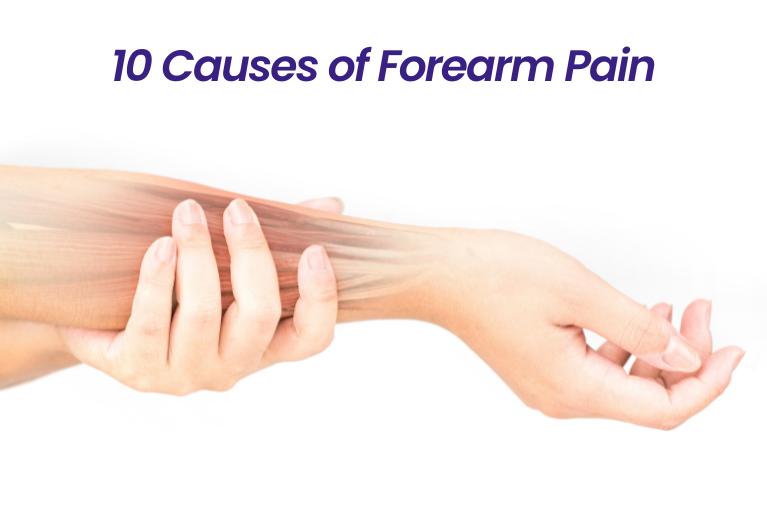
10 Common Causes of Forearm Pain You Should Know
Aug 09 , 2024
0 Comments
The forearm refers to the region between the wrist and the elbow. It is the muscle area covering the radius and ulna bones. These bones come together to join at the person's wrist. If a person suffers injury to either the radius or ulna bones and their surrounding nerves, joints, or muscles, he experiences pain in the forearm. However, forearm pain may also occur from underlying health conditions and other reasons, along with the mentioned bone/joint/nerve injuries.
Mild to moderate pain and discomfort go off with proper care and home remedies. However, severe pain, or one that becomes severe, needs immediate medical attention. However, before one undergoes treatment, one must be aware of the common causes of forearm pain discussed in our blog post.
Common Causes of Forearm Pain
Individuals go through forearm muscle pain because of the following underlying causes-
1. Musculoskeletal Causes
Musculoskeletal reasons indicate that a person is experiencing forearm pain because of certain problems in the regular functioning of the forearm. Here, your forearm components face constant and low-degree stress for a long.
Common examples are hand movement while playing tennis, improper positioning of your arms at your office desk or any other worktable, or working on a PC/laptop by leaving the elbows unsupported. Besides, musculoskeletal factors triggering forearm pain or discomfort include sleeping on your affected arm and muscle weaknesses based on the person's age.
2. Repetitive Actions
One can experience pain in forearm areas based on certain repetitive actions at home or the workplace. Common examples are regularly using crutches and regularly typing for long hours.
Also, lifting heavy weights or doing intensive bicep exercises without warm-ups may sometimes hurt your forearm. In each case, your repetitive activity compresses the blood vessels and nerves branching throughout your forearm. The repetition also causes bilateral forearm swelling and injury to the specific forearm components.
3. Carpal Tunnel Syndrome
Carpal Tunnel Syndrome occurs when your median nerve gets compressed from the hand and wrist overuse. The compression from certain repetitive activities, like long hours of working or typing, leads to numbness, pain, and tingling in the forearm.
4. Stress
Stress-related to many daily activities, like holding or lifting heavy objects, causes muscular strain in different body parts, including the upper arm and forearm.
5. Sprain
A sprain is stretching or twisting a forearm tendon/ligament. Twisting, bending, and other activities with sudden jerking movements cause a sprain of your forearm ligaments.
6. Fracture
In some cases, people suffer pain from direct injury to the forearm from a traumatic fall, a car accident, or a direct blow that led to a fracture. Forearm hurts from fractures also causes bleeding and visible deformity based on the severity of the accidental injury.
7. Arthritis
Arthritis causes wear and tear of one’s protective cartilage covering the wrist and elbow joints. The wear down further causes running of multiple bones and mild to moderate aches in the forearm.
8. Underlying Medical Conditions
Heart attack and other medical conditions may sometimes cause forearm muscle pain. However, forearm pain from a heart attack may involve some more symptoms as well. These include jaw and chest pain, abnormal sweating, and nausea. Alternatively, autoimmune health issues or immune disorders may cause swelling of the hand muscles, resulting in forearm pain.
9. Psychological Reasons
Anxiety, panic attacks, bipolar disorder, and other psychological disorders may cause muscular tension followed by forearm or body pain.
10. Diagnose Procedures
Lastly, some individuals experience temporary forearm pain from the pricking of needles or an intravenous infusion set left for many hours.
Conclusion
Forearm pain may disturb your daily life. The pain also leads to discomfort in the forearm structures and muscles. Luckily, you may overcome the pain with home remedies, rest, and expert advice. Understand the underlying causes to get the right approach for overcoming the pain limitations and restoring your daily functions.
